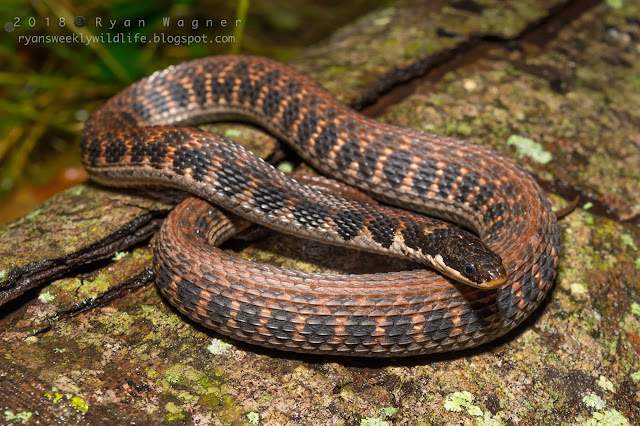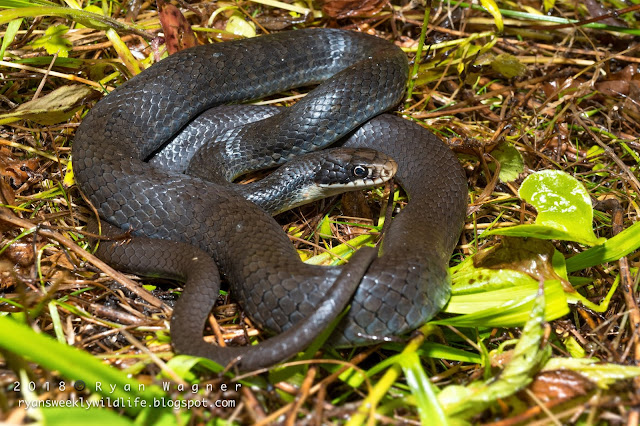Tomorrow I will release the last of our box turtle study subjects. After two years and countless miles and hours of field and lab work, the box turtle project will finally come to an end. I’ve been so busy with life and work that I haven’t had a chance to update the blog. A lot has changed this season.
After a winter hiatus, tracking started back up in mid-March, just as the turtles were emerging from hibernation. All 30 animals survived the cold, and after climbing out of the soil and leaf litter, they took off in every direction with a vengeance. We had become efficient trackers by the end of last season, but now the turtles were putting our skills to the test. We once again chased them up and down ravines, across clearings, under fallen logs, and even to the edge of rocky cliffs. We sweated in the heat of an unusually hot spring, and shivered in the early morning fog. In order to get enough GPS points by the end of the project, our four day schedule was changed to a full seven (luckily I worked only 5 days each week).
Our little turtle team has grown substantially over the past year. Where once there were just three of us, now some 16 volunteers have joined the party. Most are wildlife, marine bio, or plant bio undergrads, as well as a group of students from Hocking college. Marcel Weigand is still the brains behind the project, but preoccupied with her thesis, she has left the field work up to us. I have since taken a leadership role on the project, co-leading the tracking and data collection and training new members. My fellow leads include Christine Hanson—another wildlife undergrad, and Eva Garcia—a master’s student from France. I can’t thank them all enough for their passion, dedication, and humor that kept us going throughout the season. I have made some wonderful, mosquito-bitten friends.
The tracking season went as smoothly as could be expected. I think we ruined about 10 of the telemetry cords, and used up more batteries than I care to admit. We clipped the turtle’s nails just as we had last season (this time in the field) and took all their measurements. We quickly realized that the epoxy holding the antennas to each of the turtles’ shells was beginning to break down. By late June, Trevor slipped his transmitter—never to be seen again. This unfortunate loss of data left us fearful that other turtles would soon go missing as well. Shear luck led us to Lonesome George after he lost his transmitter under a fallen log.
Many of the turtles once again traveled within meters of the road, but none ever attempted to cross—a puzzling relief. Our data has shown that the effects of major roadways like the Nelsonville Bypass may be more complex than expected. Turtles not killed on the road are not necessarily subject to higher stress than their control counterparts. Likewise, we found little difference in home range size and habitat selection between sites. What we did find interesting is the fact that female box turtles travel a lot more than males. This is contrary to what the literature says for most turtle species. We also verified a novel technique for measuring corticosterone as a proxy for stress in eastern box turtles, and added to our knowledge of mitigation and management requirements for this species.
It was bitter sweet saying goodbye to our 30 study animals. They had endured our research long enough, and it was time for them to be fully wild again. Even after 2 years, I am still surprised by these animals almost every day. Just when I think I’ve cracked these armored fiends, they prove me all wrong. I suppose I’ll never completely understand them, and that’s the way it should be. I have gotten to know these animals as individuals—each one special and unique. Below, I have included a photo and description of nearly all our study subjects. This project was for their benefit, and I hope our data can help to protect these remarkable reptiles long into the future.
 Rumple-"scute"-skin
Rumple-"scute"-skin
If I had to pick a favorite turtle it would probably be this one. Rumple almost always stayed in the same field and surrounding woodland and was never shy when encountered. He happily posed for photos, and rarely closed up his shell. He was also one of the prettiest looking turtles I have ever seen.
 Ethel
Ethel
This turtle had one of the biggest home ranges of any of our study subjects. She moved from the woods near where we parked, up and over the ravines, all the way to the roadside. She began our trend of naming these animals like old ladies.

Scar
This old boy is named for his damaged shell. We think that years ago a coyote chewed on him, causing his scutes to heal in a rugged pattern.
 Glados
Glados
A reliable female that likes to hang out not far from another turtle, Max. She did occasionally hide from us in the soil or at the bottom of the ravines.
 Zaphod
Zaphod
He may not have two heads, but this turtle moves enough that he might as well have his own spaceship. He proves that this project was full of excitement, adventure, and really wild things.
 Penelope
PenelopeThis is the only turtle that bit me! And she actually drew blood too. Otherwise she is an attractively marked turtle that rarely gave us much trouble.
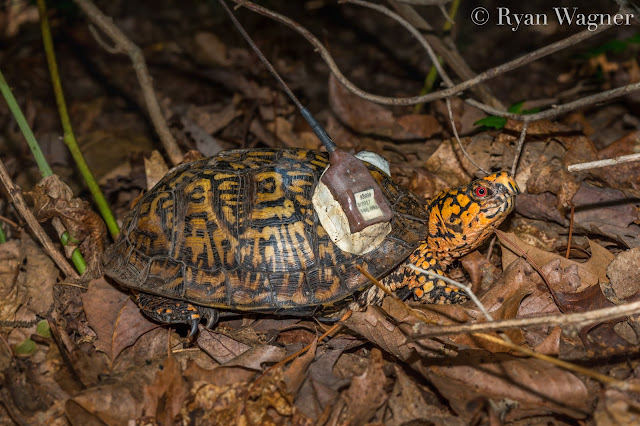 King George
King George
One of our biggest males. He's right up there with rumple as one of the favorites. He is always on the move and usually crawls away while we are still taking his data.
 Gertrude
Gertrude
This turtle traveled all the way from the parking area of our impact sight clear up to the ridge side! I am always stunned where we end up finding this girl.
 Hidey
Hidey
This is the best picture I could get of the aptly named Hidey. When trying to clip his nails, he stayed clamped in his shell for three days.
 Rose
Rose
A reliable female that hangs out by the trail. Turtles like Rose quickly became favorites in the heat of the summer.
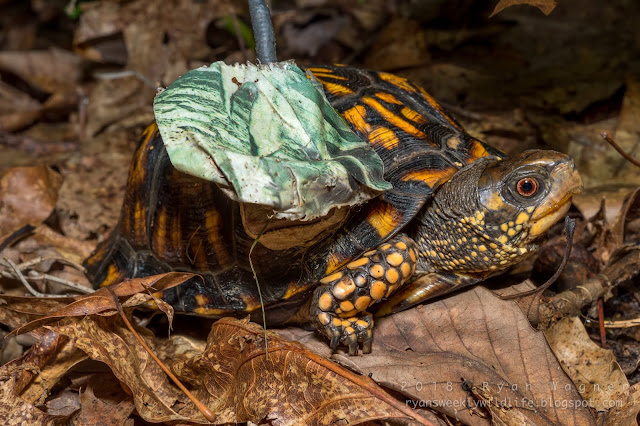
Phil
A little male who is always reliable. Good job Phil!
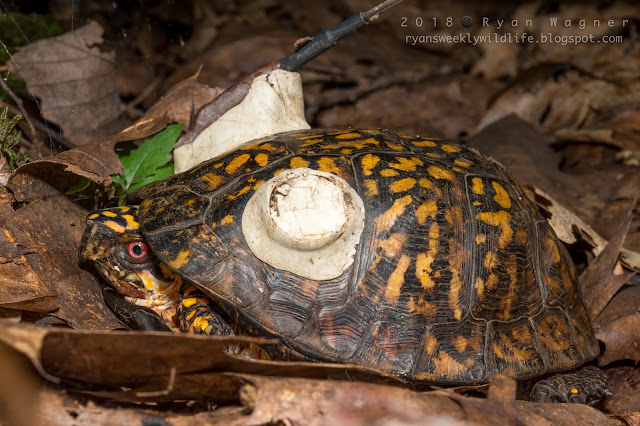 Max
Max
He likes to hang out near Glados. Those two are always good turtles to track.
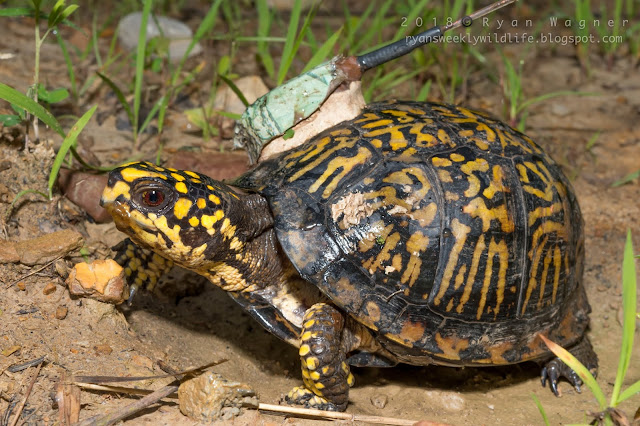 Beyonce
Beyonce
Definitely our most famous turtle. She wasn't always named Beyonce, but she quickly earned the title. This turtle moved over a mile in a week, all the way from our control site to the Hocking College Nature Center in order to lay eggs. She was our first clue to the fact that turtle tracking was not going to be easy.
 Albert
Albert
A turtle that usually hangs out around the field in our control. He is usually easy to find, although he occasionally will disappear on us for a few days.
 Dorris
Dorris
Dorris spent most of the active season in the open field adjacent to the bypass. She regularly moved within 20 meters of the road, but thankfully, never attempted to cross. She nearly gave me a heart attack each time I tracked her up to the brush along the right of way.
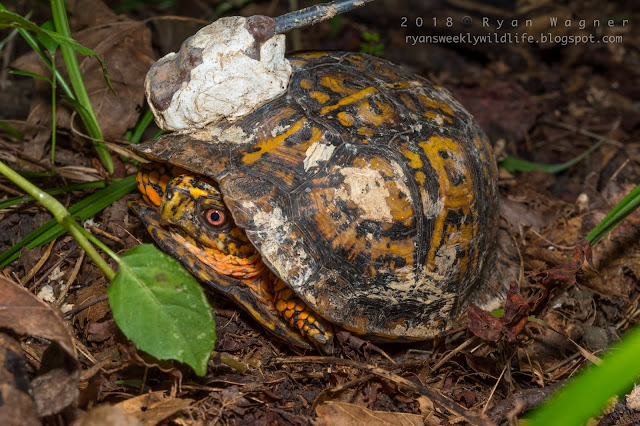 Lonesome George
Lonesome George
This turtle gave us more grief than any other. He came down with a serious upper respiratory infection that we feared was the deadly ranavirus. Luckily he was negative and even recovered well from his infection. He is named Lonesome George after the last Galapagos Pinta Island tortoise because he stayed far away from any other turtle.
 Poopzilla
Poopzilla
She earned that name. When we first opened the pencil case in which we carried this turtle back to the lab, there was more poop than turtle. Despite her less than flattering name, the male turtles can't seem to get enough of Poopzilla. We have found her mating with a large male nicknamed Romeo on multiple occasions.
 Timber
Timber
I'm proud of this turtle's name. Without fail we find him mixed in with fallen logs, branches, and other woody debris.
 Bertha
Bertha
This big female is the only turtle in our study that does not have red eyes (its a myth that you can tell the sexes apart by eye color). She was almost certainly full of eggs when we found her.

Bo
A little male that likes to endlessly go up and down the ravines.
 Stumpy
Stumpy
One of my personal favorites. Stumpy is missing both front and back legs on her right side. We worried she would be an outlier in the study, but she was able to travel just as much as any other animal. She truly showed us how resilient these reptiles can be.
 Sir Turt
Sir Turt
Sir Tert was always eating. Mushrooms, slugs, leaves, caterpillars. Whenever we found him, his beak was covered in the goo of his last meal.
 Lady Macbeth
Lady Macbeth
The scars on this turtle's back earned her this name. She has seen some stuff. Out, out.
 Cofefe
Cofefe
My liberal is showing.
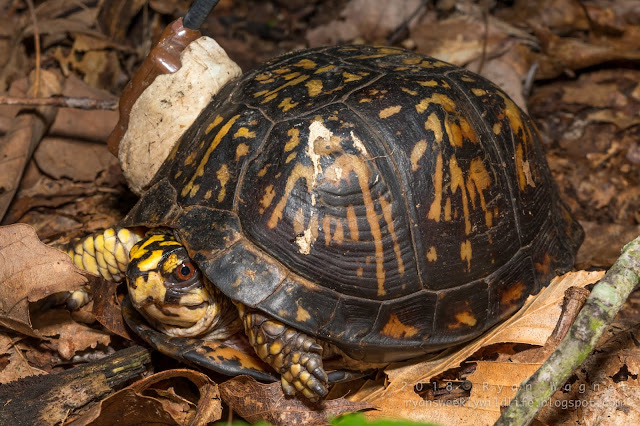 Storm
Storm
Don't even get me started on Storm. This turtle was the bane of our existence. We found her in a torrential downpour halfway through the first season right on the trail. She proceeded to take off down the steepest ravine at least a half mile from any other turtle. Ugh.
This turtle was always on the other side of the fence. We would track in ravine one day and it would be on the other side. The next day we would be at the ridge on the opposite side of the fence and this turtle would have crossed over in the meantime. He evaded us in this way most of the season.
It feels like a lifetime ago that we found each of these animals with John Rucker and his trusty turtle dogs. Marcel and I often fondly recall that week as the longest of our lives. Last Tuesday, Marcel defended her thesis. She passed of course, as we all knew she would. But that didn't stop our lab’s collective blood pressure from sky rocketing in preparation for the big day. It was a delight to watch Marcel present on our findings and accomplishments. “A little more statistics, and this could easily be a PhD project,” Marcel told me. Her talk was excellent, full of passion for the animals and hope for their long term survival. The little classroom was packed wall to wall—it seemed everyone in the wildlife biology department wanted to hear about our turtles.
The following day, the turtle team met one final time for a bon fire at Stroud's Run. We gathered at the very same campsite where we had picked up John and his dogs every morning, now over a year ago. It was a poetic ending to the coolest experience I have ever been a part of. Marcel has begun the daunting task of writing the publication and looking for her next job. I wish her luck in all her future endeavors. Her passion and dedication in the face of so much adversity has inspired me to work as hard as I can each and every day.
It really is the end of an era. So where do I go from here?
Next week, I join Christine Hanson, Andrew Travers, and Dr. Popescu’s new PhD student, Matt Kaunert, on a trip to Pennsylvania in search of the world’s third largest salamander species. I’ve wanted to see eastern hellbenders ever since I was a kid. Now could be my chance. . .


